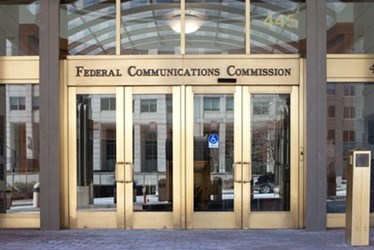FCC, Healthcare Stakeholders Clash Over Spectrum Expansion For Unlicensed Devices
By Jof Enriquez,
Follow me on Twitter @jofenriq

Some healthcare stakeholders are opposing a recent decision by the Federal Communications Commission (FCC) to open up broadband spectrum for unlicensed devices, a decision they argue could jeopardize patient safety.
The FCC’s newly announced rules allow "unlicensed fixed and personal/portable white space devices and unlicensed wireless microphones to use channels in the 600 MHz and television broadcast bands while continuing to protect television and other licensed services from harmful interference."
According to MobiHealth News, the 600 mHz band includes Channel 37, a portion of the radio spectrum designated in 2000 for wireless medical telemetry devices, such as heart, blood pressure, respiratory and fetal monitors.
FCC rules had permitted unlicensed devices to use "white space" spectrum on unused TV channels, but an upcoming incentive auction will limit white space frequencies, according to the FCC statement. Now, the FCC says there is a need to expand spectrum use to unlicensed devices, which "have grown from basic garage door openers and cordless phones to Wi-Fi and Bluetooth technologies to the “Internet of Things.”
The FCC decision has generated skepticism from some major stakeholders in the healthcare industry. Specifically, the American Hospital Association (AHA) has expressed deep concern about allowing unlicensed devices to share spectrum previously exclusive to patient monitors.
"We believe that the technical rules adopted today by the FCC, which would allow unlicensed devices to operate in relatively close geographic proximity on the same frequency as hospitals’ Wireless Medical Telemetry System (WMTS), is not in the best interest of patients," said Rick Pollack, executive VP of AHA, in a statement.
"These unlicensed devices may cause interference with wireless monitoring, preventing doctors and nurses from receiving vital information. There are more than 360,000 WMTS patient monitors in hospitals today, many of which are used for women and infants during labor and delivery and critical heart surgery patients," said Pollack.
The AHA says it had requested that the FCC delay its decision pending further analysis of technical considerations; specifically, establishing the extent of the buffer or exclusion zone around hospitals. However, the FCC went ahead with its decision earlier this month and set a buffer of 380 meters around hospitals.
According to Health Data Management, "the FCC, according to a commission spokesperson, initially proposed 100 meters between unlicensed devices and hospitals, and hospitals initially said they needed 300-360 meters, so FCC gave them 380 meters, more than tripling the size of the initial safe zone. That said, the FCC wants to be flexible and hospitals needing a larger safe zone can request it. If a facility detects potential harmful interference, we can immediately restrict outside access and expand exclusion to one kilometer.”
However, Modern Healthcare reports that tests conducted by AHA with GE revealed that devices could interfere with wireless medical telemetry even when operating outside of the FCC's one-kilometer buffer zone. The association now wants a standard buffer of at least three kilometers around hospitals.
“They've drawn those lines, that circle around the hospital... it's too close,” Erik Rasmussen, VP for legislative affairs at the AHA, said in the report. “There could be a device outside but it could still block the signal outside the hospital.”
The Association for the Advancement of Medical Instrumentation (AAMI), which describes itself as a primary source of both national and international consensus standards for the medical device industry, said in a press release that its Wireless Strategy Task Force has begun to study the FCC ruling, adding that its impact will likely be significant for healthcare facilities.
Health Data Management reports that the FCC spokesperson stated the agency is still about three or four years away from allowing unlicensed devices to use Channel 37, and the commission is open to changing rules based on stakeholder input.
"We remain highly concerned that if the rules adopted today are left unchanged, patient safety could be compromised. We will continue to work with Congress, the FCC and device developers to seek a remedy that puts patients first," said Pollack in the AHA statement.
